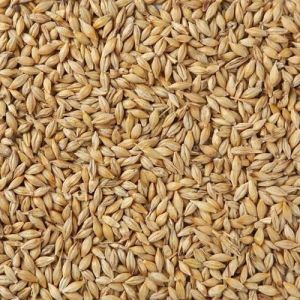Unraveling the Alchemy of Beer
Beer, a beverage with a rich history spanning millennia, has quenched the thirst and brought joy to people across the globe. Central to the allure of beer is its alcohol content, which adds the characteristic flavors and intoxicating effects that beer enthusiasts cherish. In this blog, we’ll delve into the alchemical process of brewing beer and uncover the magic behind how alcohol is created.
The Genesis: Malting and Mashing
Our journey into the world of beer begins with malted barley, the primary grain used in brewing. The malting process involves soaking barley in water and allowing it to germinate. This activates enzymes that transform starches into fermentable sugars. The barley is kilned to halt germination once it is malted.
During mashing, the malted barley is crushed and mixed with hot water. This creates a mash. The enzymes in the malt convert the starches into fermentable sugars, providing the essential nourishment for the forthcoming magical transformation.

The Enchanting Transformation: Fermentation
Now comes the pivotal moment of the beer-making process—fermentation. The sugary liquid extracted from the mash, known as wort. It is then transferred to a fermenter. In the fermenter, the enchantment is initiated with the introduction of yeast.
Yeast, a tiny single-celled organism of the species Saccharomyces cerevisiae, works its magic by feeding on the sugars present in the wort. This process, known as fermentation, produces two enchanting by-products: alcohol (ethanol) and carbon dioxide.
The Alchemy of Fermentation: Anaerobic Magic
Fermentation is a mystical process that occurs in the absence of oxygen—an anaerobic reaction. As the yeast consumes the sugars, it releases energy through glycolysis, breaking down the sugars into simpler compounds. The magical enzyme alcohol dehydrogenase then performs its alchemy, converting these compounds into alcohol, which we know and love as ethanol.
Simultaneously, carbon dioxide is released as a by-product, lending the beer its effervescence and contributing to the formation of frothy foam.
A Masterful Touch: Controlling the Magic
To achieve the desired results, the brewmaster employs a masterful touch in controlling the fermentation process. Temperature plays a crucial role in shaping the beer’s character. Lower temperatures lead to slower fermentation, yielding delicate flavors, while higher temperatures result in more rapid fermentation and bolder flavors.
Additionally, the duration of fermentation also affects the beer’s final taste. Allowing the yeast more time to work its magic can lead to a drier and more alcoholic beer, while shorter fermentation periods retain more residual sweetness.
Age-Old Wisdom: Conditioning and Maturation
The magic of fermentation doesn’t end with the primary stage. After fermentation, the beer undergoes conditioning and maturation, an age-old tradition that imparts complexity and refinement to the brew.
During this period, the beer rests and matures, allowing flavors to meld harmoniously. Yeast continues to work, cleaning up any undesirable by-products, resulting in a smoother and more enjoyable beer. Depending on the beer style, this process can last anywhere from a few weeks to several months.
Savoring the Magic: The Final Elixir

After the meticulous alchemy of brewing, the beer is ready to be savored and enjoyed. Each glass holds a story of transformation, from barley to malt, from sugars to alcohol—a tale of the magic of fermentation.
As you raise your glass of beer, take a moment to appreciate the alchemical journey that brought it to life. The meticulous interplay of yeast and sugars, the control of temperature and time, and the wisdom of maturation culminate in the enchanting elixir we call beer. Cheers to the magical world of brewing and the wonders of alcohol that continue to captivate and unite beer enthusiasts worldwide.